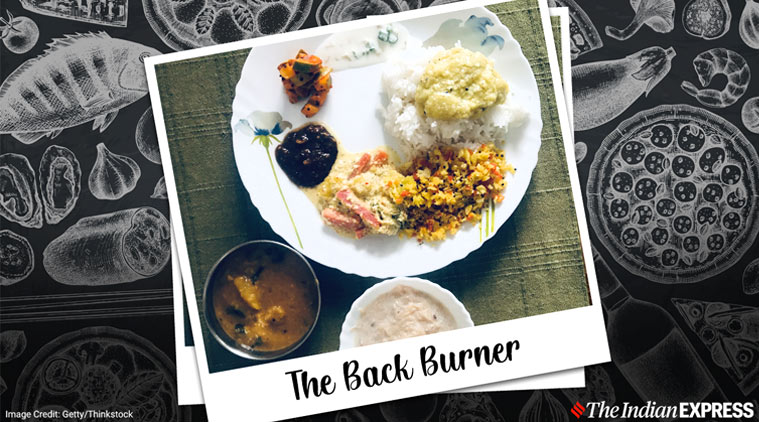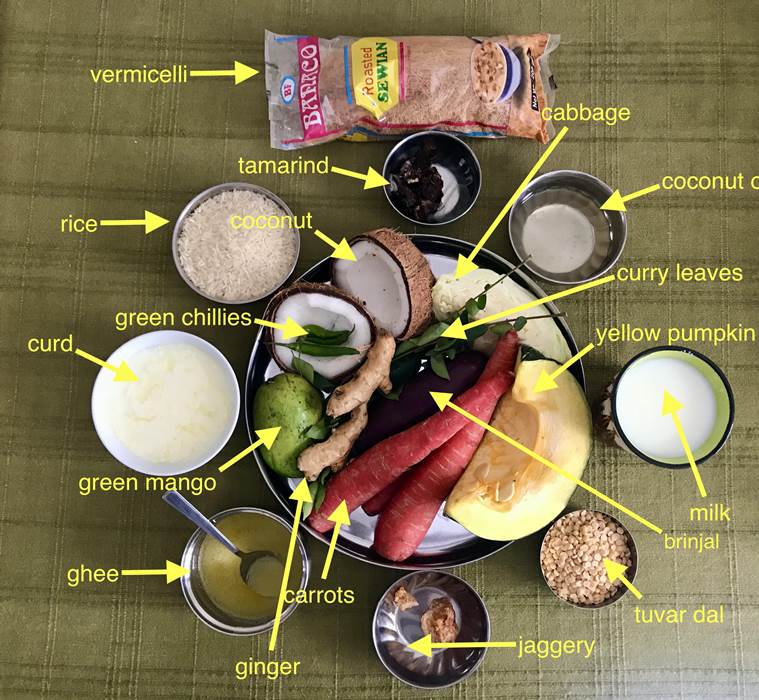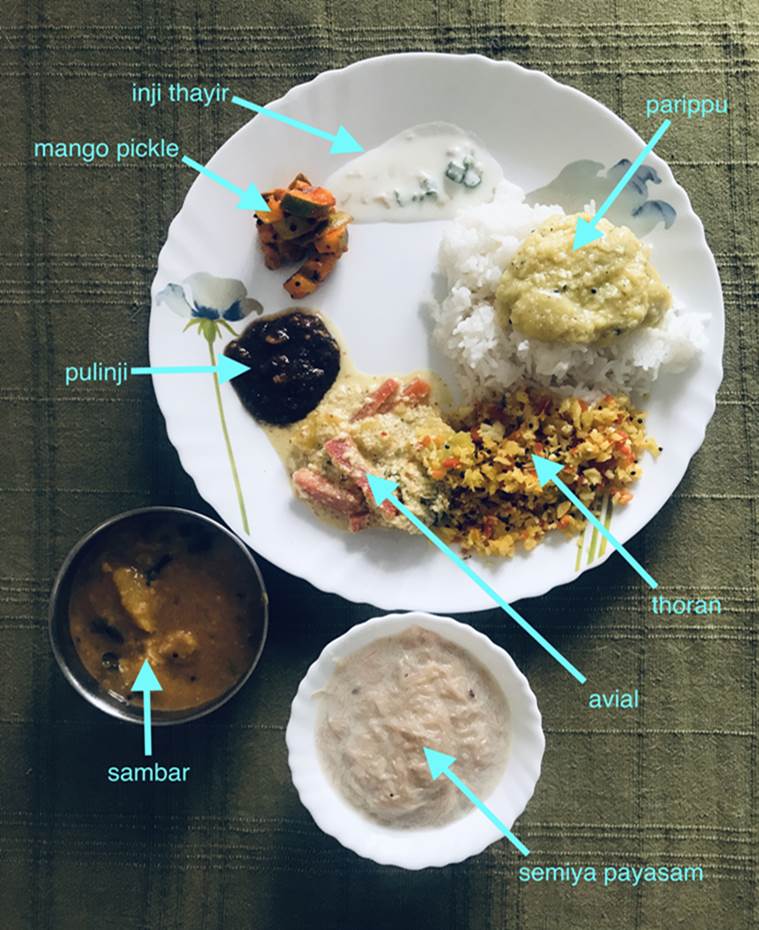 It’s not as much as I make for Vishu or Onam in a ‘normal’ year, but then it’s a lot more than many people have — either right now or in ‘normal’ times. (Photo by Pooja Pillai; designed by Gargi Singh)
It’s not as much as I make for Vishu or Onam in a ‘normal’ year, but then it’s a lot more than many people have — either right now or in ‘normal’ times. (Photo by Pooja Pillai; designed by Gargi Singh)
Two days ago, a video of a man in Agra, desperately trying to salvage the milk that he had spilled on the road, went viral. That evening, I went shopping for the modest Vishu sadhya that I had planned for the next day and found that none of the fresh ingredients I needed — ash gourd, drumstick, elephant foot yam, raw plantain, long beans, snake gourd, Madras cucumber — was available. Neither could I find banana leaves, on which this feast is traditionally served. Obviously, there’s a world of difference in the disappointment I felt and the despair that man in Agra must have felt. Our individual experiences of deprivation simply can’t be compared.
Perhaps that’s why it seems to me that there’s a dissonance in calling what I’m beginning here a food blog. Since food blogging began, it has occupied a parallel world where the sole question is about consumption: how to cook and eat a particular dish. The dish in question could be as basic as masala Maggi with vegetables or as elaborate as hand-made soba noodles with mentsuyu and kakiage. The question of procuring food — unless it’s an exotic or rare ingredient — doesn’t enter into it. On the other hand, in the real world, as we enter week four of a nationwide lockdown in response to the COVID-19 pandemic and as news of people struggling to find basic sustenance filters in, it’s a question that’s increasingly hard to avoid. How do we square these two worlds? This is one of the things that, hopefully, this blog will be able to address.
 The raw ingredients for my Vishu sadhya (split yellow moong and sugar are not in the photo, because I forgot to include them) (Photo by Pooja Pillai)
The raw ingredients for my Vishu sadhya (split yellow moong and sugar are not in the photo, because I forgot to include them) (Photo by Pooja Pillai)
The current situation also forces one to ask another related question: what will cooking and eating look like in the post-coronavirus world? Not very different from the pre-coronavirus world, one suspects, although one does hope that mindful consumption becomes more mainstream. And before anyone goes up in arms against the idea, railing at the thought of austerity when “normalcy” returns, let’s be clear: it is possible to challenge the idea of feasting without shortchanging our taste buds or eschewing joy and celebration. To begin with, have you read this piece that we recently published on the occasion of Vishu about how to go about preparing a minimalist sadhya?
My own Vishu sadhya, I would venture, is a good example of the above: I used the ingredients you see in the first photo to make eight items (not counting rice and appalams):
- Inji thayir — a palate cleanser made of finely-chopped ginger and green chillies in dahi
- Pulinji — a thick, sweet and sour chutney made of ginger, tamarind and jaggery
- Raw mango pickle
- Parippu — a thick dal made of split yellow moong, and typically served with ghee at the start of a sadhya
- Sambar — made with long brinjals, carrots and yellow pumpkin
- Avial — a side dish made with an assortment of vegetables (I had only carrots and yellow pumpkin to use here) cooked with a coconut and dahi paste
- Cabbage and carrot thoran — stir-fried vegetables mixed with freshly-grated coconut
- Semiya payasam — basic vermicelli kheer
 The final sadhya, served on my ordinary plate. But it’s the content that matters right now, not the presentation. (Photo by Pooja Pillai)
The final sadhya, served on my ordinary plate. But it’s the content that matters right now, not the presentation. (Photo by Pooja Pillai)
This fed three people, with enough left over for last night’s dinner and today’s lunch. It’s not as much as I make for Vishu or Onam in a ‘normal’ year, but then it’s a lot more than many people have — either right now or in ‘normal’ times. And again, my point is not to make a celebration of food seem obscene (although sometimes it can be), but to say that a little application of the mind and conscience can go a long way in our appreciation of food — whether it’s made by us or by someone else, and whether it’s made with the choicest of ingredients or the hard-won minimum.
The Back Burner is a biweekly blog that will talk about all things food (with recipes, of course)